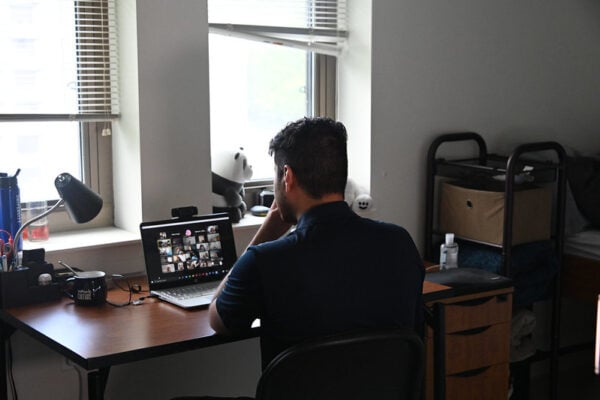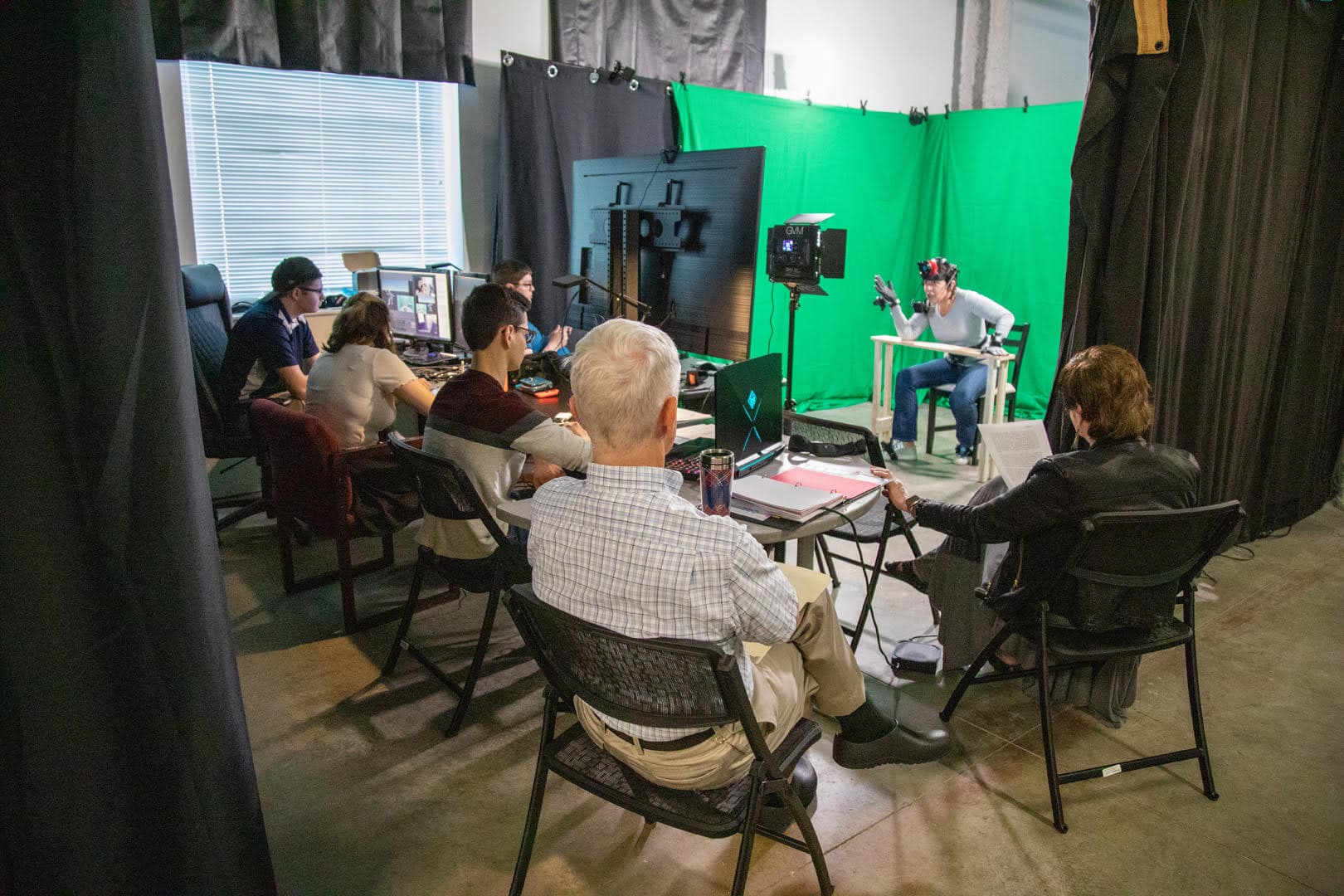The COVID-19 pandemic has put historians in an uncomfortable position. We are used to researching and chronicling major historical events, so it is only natural that we feel a level of disquiet when we are actors in events we are usually separated from. As a result of campus closures, many of us have been focused on adapting our pedagogy for this new socially distanced world. Some taught online for the first time because of the pandemic, and naturally we focused on effective ways to transmit historical information and understanding through this medium.

Teaching and learning on Zoom has created unanticipated mental stress for both instructors and students.Dominican University/Flickr/CC BY-NC-ND 2.0.
Of equal importance to communicating our subject matter was communicating with our students on a human level. Both instructors and students began to feel the mental strain from the economic, social, and public health upheavals of this time. Depression and anxiety have become constant companions for many of our students. In my classes, I thought consciously about how I might alleviate the strain for students managing their mental health during a pandemic.
I first tried to establish a sense of normalcy. I was teaching four in-person classes when the pandemic hit, so I set up web meetings for the assigned class periods. These were not required—which would only add another level of stress to students who were essential workers or parents who were now dealing with their own children’s distance-learning needs—but were there as a resource and to provide a bit of routine to our disrupted lives. As it became clear that some students were feeling the weight of the pandemic mentally, I used our Webex lectures to converse with them more directly about what we were experiencing. I even instituted “mental health days,” when I would send them my lecture notes and we would instead discuss whatever they wanted to during class time. Some of them had not had a conversation with someone outside of their household in over a month, and their work improved and their enthusiasm increased in the wake of these days.
I thought consciously about how I might alleviate the strain for students managing their mental health during a pandemic.
As for myself, the switch to remote teaching added a weight to my own mental health. Students normally did not turn on their webcams or microphones during lectures, so I would be teaching to a blank screen, with a small box showing my face as I talked. I would focus on that box, which felt narcissistic, but it felt better than Nietzsche’s abyss.
Moving my classes online wasn’t the hard or stressful part. The hard part was being separated from my students. At times, it felt like I was more of a moderator than an instructor. Online education is often impersonal, even when we hold virtual office hours or lectures, and the lack of interaction weighed heavily on me. I would find out that students weren’t understanding something in their submitted work, rather than picking up on their struggles in class. Those “mental health days” were as much for me as they were for my students; they allowed me to reconnect with the actual people hiding in cyberspace.
The pandemic has drawn our attention to public health. But as educators, it is important to remember the mental health of our students, as well as ourselves. Being aware of our students’ and our own mental state is fundamental to being effective instructors. To me, this period has demonstrated that the social aspect of education is vital. Things that were commonplace, like banter before class and humorous asides, were suddenly gone and their absence was absolutely felt by my students and me. We are social animals, and when we are cut off from the social elements of education, our mental health may suffer.
Being aware of our students’ and our own mental state is fundamental to being effective instructors.
While we study history, and may not be comfortable becoming part of it, we can use our understanding of structures and processes to help our students make sense of these times and identify indicators of societal change. I encourage you take note of mental health in your classes going forward, even when we return to a more traditional environment. The pandemic created stress and strain for all of us, but all of the issues that we have dealt with did not originate with the crisis. I know that I will be much more aware of the strains that my students are facing from here on out, and will take more regular stock of my own mental health.
My hope is that this finds you well. If you are feeling the mental or emotional strain, you are not alone.
James Hysell is a visiting instructor at Purdue University Northwest. In spring 2019, he taught Introduction to the Modern World, Introduction to the Medieval World, and Asia in the Modern Era.
This work is licensed under a Creative Commons Attribution-NonCommercial-NoDerivatives 4.0 International License. Attribution must provide author name, article title, Perspectives on History, date of publication, and a link to this page. This license applies only to the article, not to text or images used here by permission.


